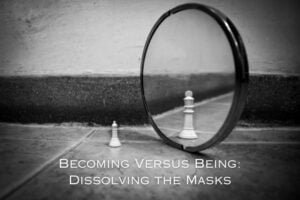“You are the master of your destiny. You can influence, direct, and control your own environment. You can make your life what you want it to be.”
~Napoleon Hill
There is no harm in cutting your losses, changing your mind halfway, and leaving something that is draining you of your Time, Energy, and Effort. In the sense that you quit investing in something that is not reaping the returns you expected from it.
We often put our hands into something like a business venture, a partnership, or any kind of transactional relationship that may give us the returns we expect. However, when it doesn’t, we are led to believe we didn’t think it through. Maybe that’s true but maybe also certain aspects of that event or the conditions were not in our control. At that moment, one must decide whether or not to continue or cut the losses.
The Stop Loss Conclusion
In the trading market, when the share of a specific company invested in goes up, one waits with bated breath to hope for an even higher rise. However, when the share starts to dip, there’s disappointment mixed with silent hope. The hope is that the share may have dipped a bit but may also rise again.
Later, one sees that the share of that specific company continues to dip. So, should one continue to trade or cut their losses and take what’s left? But some people, seeing the history of shares rise after a steep fall, continue to trade until they can’t handle their losses anymore.
“Put a Stop-Loss on your worries. Decide just how much anxiety a thing may be worth and refuse to give it any more.”
~Dale Carnegie
One must recognize and appreciate the limited resourcefulness of these three aspects in their lives:
- Time
- Energy
- Effort
TIME is limited, which means we have less time that once spent will not come back unless we finally get that long-awaited time machine invented. Until then, time is limited, and therefore, we must respect its availability.
ENERGY, again, is a valuable force that is difficult to produce once lost. Energy represents the decisions made and actions taken, and the energy invested in enacting these two parts. In this case, a step taken further cannot be undone. However, energy is something that still needs to be spent. Keep this in mind as I further talk about spending a limited resource.
Finally, EFFORT is the last limited resource that cannot be brought back. Effort represents the hard work one puts into something to gain returns in the form of rewards, money, scores, etc.
When the TIME, ENERGY, and EFFORT are limited, it is wise to maintain the WINNER approach before or during investments of any kind.
To cut your losses, you must ask yourself, am I WILLING TO INVEST NOW OR NOT TO ENGAGE AND RESPOND? (W.I.N.N.E.R)
A stop loss is necessary when you realize that you are no longer gaining the returns expected. So, when you leave or quit the investment and get out before you incur more losses. After all, there is no harm in cutting your losses. Yes, you may have made a mistake but that’s okay, leave while you can and when the damage is still not as bad.
Therefore, whenever you must decide whether to stay in a situation and hold on or leave, use the WINNER approach. Apply a stop loss when necessary and do not wait until you are neck-deep in losses. If nothing else, ask yourself whether the time, energy, and effort you continue to invest is worth it or not.



